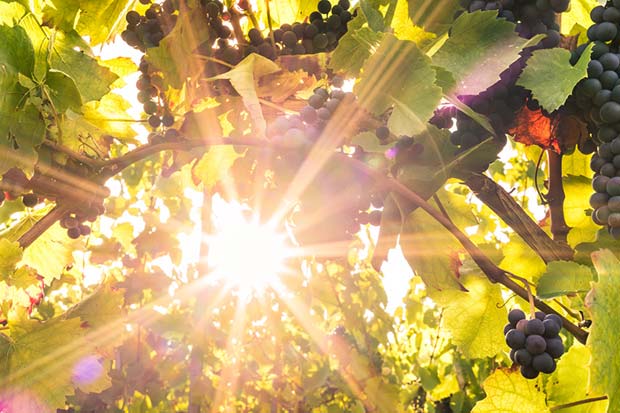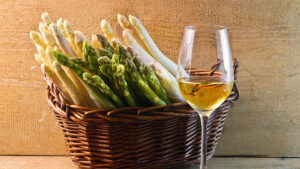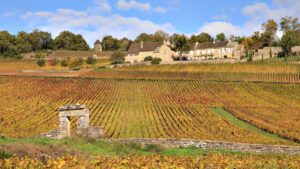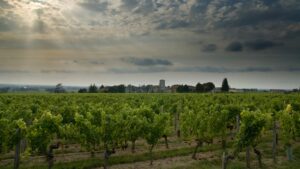
Everyone involved in the wine industry, from producer to consumer, watches the weather carefully each day of the year. Will it be a year for good quality wine or for plonk? Contrary to a firmly held belief, it takes more than very warm and fine weather for vines to produce a top vintage. Let’s take a look at how climate affects vineyards.
In this first part, we will concentrate on temperature, light, water and soil. In Part 2, we will see how climate becomes doubly important at certain key points in a vine’s development.
The severe frosts at the end of April 2022 were a painful reminder. Climatic conditions don’t just affect the quality of wine in any one year; they also have an impact on volume, and therefore winegrowers’ income. In 2016, for example, producers in all parts of Burgundy, the Loire Valley and Champagne, the most affected areas in France, lost most of their harvests before the year had really begun all because of the destruction that frost can cause.
Fortunately, situations as serious as this are still relatively rare. After the period generally spanning mid-April to mid-May, depending on the region and grape variety, vines begin to grow and develop leaves. At this point, their growth cycle is fully established and it is this that has the greatest influence on a vintage’s future rating.
A vintage is therefore influenced by climatic conditions in a given year and the qualities these produce in the grapes. The ideal grape has balanced sugar and acidity levels (liquid, or juice ripeness) and nicely matured skins and seeds (ripeness of solids) to make a good or even fine wine. The liquid part, or juice, of the grapes is linked to alcohol maturity and the solid part to what is known as phenolic ripeness.
What is the best climate for grapes?
Generally speaking, you’ll find the majority of the world’s vineyards between 50° and 30° north and south of the Equator. This is because here vines will have the enough warmth and sunlight to survive and to produce good wine, that has balanced body, acidity and alcohol with pleasant aromas. There are of course some anomalies to this, such as the Salta region in Argentina, which uses the altitude of the mountains to find temperatures cool enough for a vine to thrive.
Warmth, light, water, and nutrients are key for any vine to flourish and make good wine. Winemakers also have to take into account what varieties suit the climate of their vineyard.
Warmth and light

The sun (and sunlight) plays an essential role as grapes produce sugar through photosynthesis. The sun also helps ripen grape skins and seeds (known as phenolic ripeness, referring to the phenolic properties in the solid parts of the grape). Temperature reduces acidity levels – a plant’s ability to break down acid is linked to the heat it stores.
The greater the number of hours of sunshine, the richer a wine is in polyphenols and the more aromatic the grapes (although excessive heat can often cause heaviness). Vines therefore need to collect enough heat for their growth cycle to progress and their grapes to ripen effectively.
At temperatures below 10°C and above 35°C, photosynthesis will be disrupted and vines will not grow properly. In France, average temperatures during a vine’s growth cycle (which roughly runs from early spring to late autumn) vary from 13°C in the vineyards of Alsace to 18.3°C in the vineyards of the southern Rhône Valley. The planting make-up or choice of grape variety (early or late) will therefore depend on the local climate and the level of ripeness needed to produce different types of wine. French vineyards are classified by climatic areas (cool, moderate, warm) and grape varieties are chosen according to the conditions they need to ripen adequately. For example, one of the reasons Cabinet Sauvignon is planted in warmer regions is that it needs lots of sunlight to ripen and produce a good wine.
Water

Rain is not the winegrower’s enemy, but it does depend when it falls! Vines need between 400 and 600 mm of rain per year. Rainfall has an important influence on yields during the flowering-ripening period and on sugar concentrations and the organoleptic qualities of wines at harvest time. Ripening requires plenty of warmth and very little water. The vines must have the water they need, but no more than that.
Water enables vines to take up minerals and stimulates growth. It also has a strong influence on the volume and make-up of the harvest. A regular supply of water throughout the growth cycle is needed for a high quality crop. If the water supply is poor, photosynthesis is less effective and the grapes do not ripen and also lose weight. This is known as water stress. If there is too much water however, the vines become too robust and the grapes swell and do not produce enough sugars, acids or phenolic composites. This means a vintage will be “diluted”.
Watering conditions in vineyards vary depending on the terroir. A good terroir will have a regulated but adequate water supply. These conditions depend on the level of the water reserve in the soil and the underlying bedrock. In a dry climate area, it is good to have soil and subsoil that can build up a substantial water reserve. In wet climate areas, well-drained soil is essential. A vine’s root system and access to water reserves plays an important role in regulating and taking up water. This is why winegrowing techniques influence the climate’s impact on grape quality, and therefore wine so much. Organic vines grown on carefully worked soil tend to have deep roots and are better able to withstand very dry or very damp periods. Less well-tended vines, on the other hand, will have shallow root systems and be more susceptible to prolonged dry periods or incessant rain.
Soil
More generally, soil type also plays a significant role depending on the year.
In coarse sand and gravel alluvial soils with very little clay and low water retention, roots grow downwards easily and vines resist drought well. Conversely, during periods of heavy rain these types of soil are remarkably permeable.

In hard limestone soils such as calcaire à astéries, roots can spread between 30 and 70 cm. In dry periods, the underlying rock, made of compact limestone, supplies the vines with water through capillary action. When it rains heavily, the permeable nature of the limestone means the soil drains rapidly.
In poorly aerated clay soil, roots remain less than one metre below the surface. In dry periods, the soil’s substantial water retention properties provide an adequate supply of water. When it rains, the clay swells, becomes impermeable and water runs off the surface.
A common feature of the best quality vineyards and terroirs is soil that regulates the supply of water to vines at different stages in their growth cycle.
In the second part of this article, we will look at those strategic points in the year when good climatic conditions are essential.



